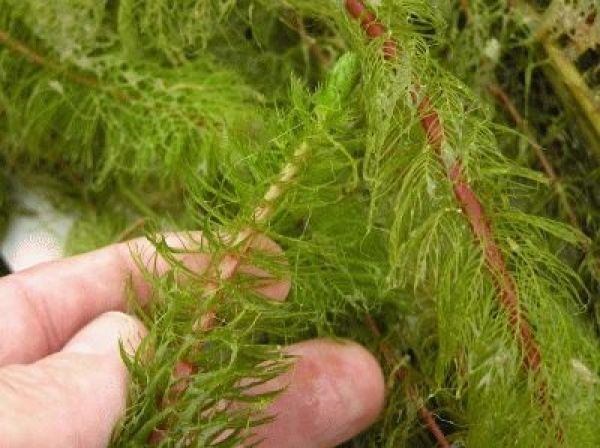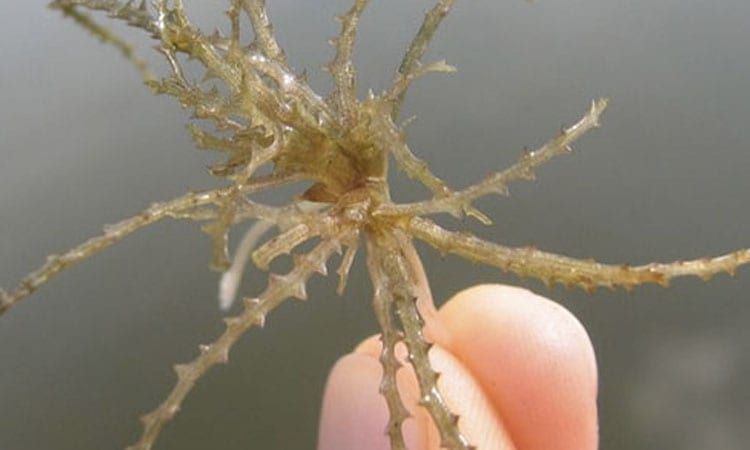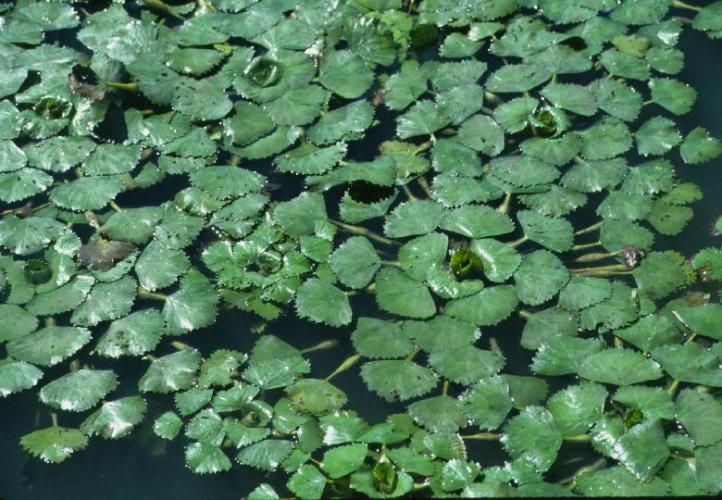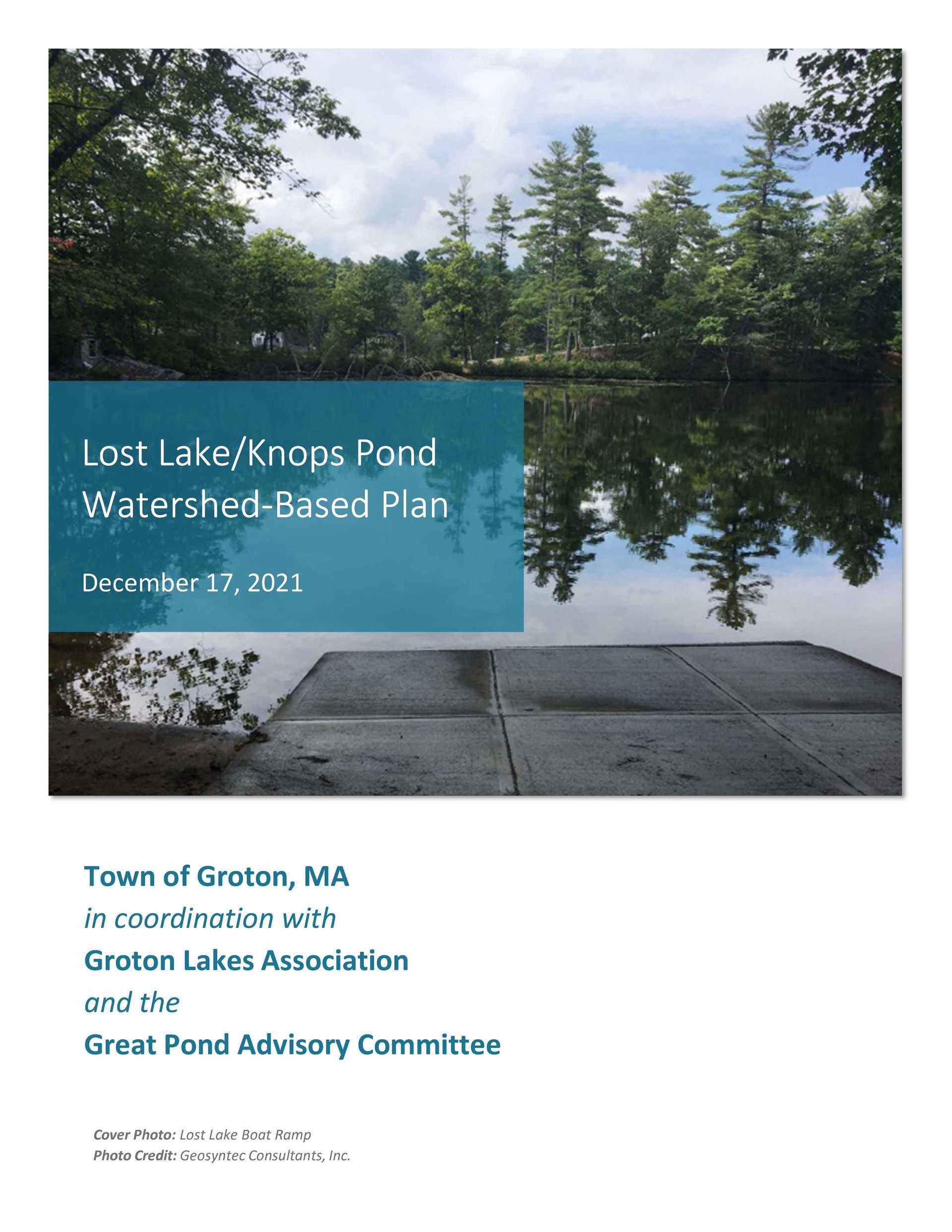Weed Management Problem Statement
Lost Lake and Knops Pond make up a 204 acre waterbody located in Groton MA. Based on surveys conducted by Aquatic Control Technology, Inc. in September of 2011, it is estimated that more than 130 acres (~64% of the surface area) are currently inundated with nuisance-level growth of submersed invasive non-indigenous plant species. This infestation is killing off native plant species thereby virtually eliminating habitat diversity in the lakes. In addition to this there are several patches of upland invasive species along the shoreline of the waterbody. Five non-native invasive species were observed in the waterbody including fanwort (Cabomba caroliniana), variable milfoil (Myriophyllum heterophyllum), Eurasian milfoil (Myriophyllum spicatum), spiny naiad (Najas minor) and water chestnut (Trapa natans). Based on the assemblage of invasive species that are currently problematic at Lost Lake and Knops Pond, a program that integrates chemical treatment, winter drawdown and a combination of physical and manual removal techniques is proposed to control the invasive species and maintain open-water conditions.
To Read or View our Watershed Plan click on the image below, requires Adobe Reader

Fanwort

Variable Milfoil

Eurasian Milfoil

Spiny Naiad

Water Chestnut
Non-native invasive aquatic weed problem
Lost Lake and Knops Pond have non-native, invasive, aquatic weeds that can crowd out native weeds and choke the waters affecting the habitats of fish; eliminate the prey of osprey and eagle; and reduce the recreational activities including, swimming, boating and fishing.
How did these weeds reach this water body? One source are waterfowl that can fly from one riverine or lake environment to another. Water chestnut chokes many waterways in Massachusetts. The nuts can easily attach themselves to the birds and become dispersed within their flight area. Several plants were spotted by residents looking for them close to shore. The Great Blue Heron, a common visitor, is the perfect vector for spreading this plant. Fortunately, if caught early, they can be pulled up, removed and disposed of. It is important for residents to be able to recognize them before they overwhelm a water body.
The main source of invasives is boaters who have not cleaned their boats or trailers from another pond and or lake that has invasives and launch their craft. The public boat launch on Lost Lake is where the first Fanwort (Cabomba) was found back in the 1990s. This weed can spread fast especially when propellers cut it into pieces which then reseed themselves. Milfoil is a common nuisance aquatic weed found in most lakes. While it can choke out areas of a pond or lake, it does not match the aggressive spread of fanwort which can also block out the milfoil.
A comprehensive study of the lake listed a number of physical and mechanical ways to deal with these weeds, instead of using herbicides. Hand pulling was tried, but unsuccessful owing to the mucky bottom. Pulling a plant threw up a cloud of sediment making it impossible to see anything. Benthic barriers were tried to prevent weed growth, but were difficult to install and without regular maintenance and impossible to keep clear of sediment. Drawing down the lake’s water to freeze out weeds also proved impractical as shallow wells were susceptible to failure. In the end, the most practicable solution was to apply herbicides.
A three-acre area near the public launch was treated in the 1990s to remove the Fanwort and reduce the milfoil. Unfortunately, it was unsuccessful and fanwort spread throughout the lake, especially in the shallower areas near shore or littoral zone.
A used weed harvester was purchased and used for a few years to keep waterways clear. Disposing of the cut weeds was a problem as were the numerous cuttings that exacerbated the spread of the invasives. Finally, in 2013, with Town funding in place, a whole lake treatment, reduced the invasives to a manageable level. The lake is surveyed at least twice per season to measure the effect of treatment and help plan future spot treatments each spring. After many years of treating, the Fanwort began to take over again. A second whole lake treatment was applied in 2021.




